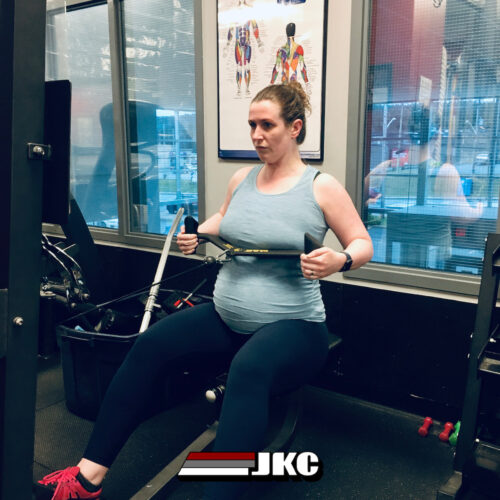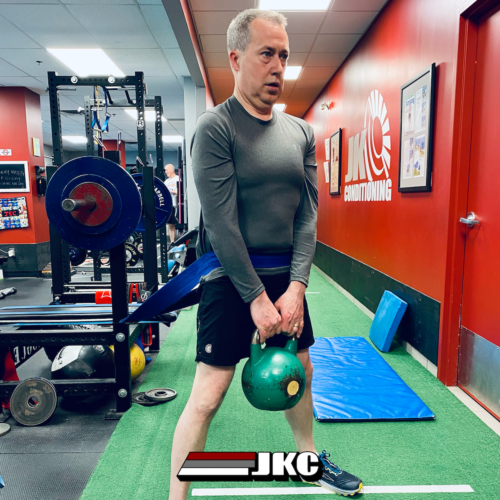
The review paper by Aagaard and Andersen titled Effects of strength training on endurance capacity in top-level endurance athletes, discusses concurrent strength and endurance training in highly trained endurance athletes. Previous research in this area is equivocal. Some studies show improvement in endurance performance while others have found an attenuated cardiovascular response. This paper reviews over 50 research articles and forms an opinion on whether strength and endurance training is a good idea.
Strength vs. Endurance
Concurrent strength and endurance training makes sense – at least in the context of their individual definitions. Strength training has the goal of improving strength usually measured as rate of force development and the maximum voluntary contraction in a group of muscles.
The Essentials of Strength Training and Conditioning (3rd Ed.) textbook defines strength as “the maximal force that a muscle or muscle group can generate at a specified velocity.”
Harvey Newton, in Explosive Lifting for Sports states “strength training implies that the athlete is actually using a high enough resistance, applied with a relatively low number of repetitions, to actually gain strength.”
Mel Siff in Supertraining defines dynamic strength-endurance as “…cyclic exercises in which considerable tension is repeated without interruption during each cycle of movement (e.g. in running…)…”
In the Science and Practice of Strength Training (2nd Ed.), “strength or muscular strength is the ability to generate maximum maximorum external force…recall that in mechanics and physics, force is defined as an instantaneous measure of the interaction between two bodies.” (in this case, between your foot and the ground)
Endurance training on the other hand has a totally different goal – improving the ability to sustain a repeated task (e.g. running) or the ability to maintain a certain level of muscle contraction (e.g. front plank or grappling when wrestling).
So, you can see, both goals of training are very different from each other and they are obtained via performing exercises on opposite ends of the intensity spectrum; however, does combining the two different training programs improve endurance performance or inhibit it? The concern goes the other way as well – aerobic training added to strength training may reduce anaerobic performance qualities and reduce high strength and power performance (but since we are worried about running fast, we’ll just consider adding strength training to an existing running routine).
To lift or not to lift
You’ll notice among running friends or even among the elites that they’ll say running and running alone will make me a faster runner. “I don’t need to go to the gym, I need to run.” Or “Why would I want to fatigue myself with that type of training and negatively affect my running ability?” These might be a few comments you might hear. Some of these comments though, have their place because of two things:
1. Mitochondrial Dilution and 2. Increased weight.

Depending on the program, hypertrophy or the increase in muscle size can be a wanted result, say in a body builder or a dude in their 20’s trying to look like Captain America. For an endurance, runner – this can be bad and detrimental to performance. Muscle fibers increase in size with hypertrophic resistance training. What’s inside the cells does not increase at the same rate (and may not increase at all) – meaning the “stuff” inside, like the mitochondria, become fewer per unit area – this is known as mitochondrial dilution. Now, you might be asking what the heck are ‘mitochondria’? Mitochondria are known as the powerhouse of the cell because it is where aerobic metabolism takes place. Because there are now fewer mitochondria per unit area, less energy can be produced to power the larger muscle(s) meaning that fatigue sets in much quicker.
Increased weight, on the other hand, means you have to carry more weight around the track or on the road when racing. It’s self-explanatory why this would require more energy and be less efficient compared to running at a lower body weight. Think of wearing a very bulky running shoe. The oxygen cost of wearing a shoe of this nature compared to a lower profile lighter shoe is much greater and obviously negatively effects running performance.
However, Aagaard and Andersen found that the benefits of endurance training and the benefits of strength training were both seen without any negative effects to endurance running performance. The muscle size did not change and capillary density was not affected. This bodes well for the endurance athlete.
The heavy resistance strength training protocol was found to:
- improve neuromuscular communication (rate of force development and maximal voluntary contraction),
- increase tendon stiffness,
- increase the percentage of Type IIA muscle fibers.
If you’re wondering, Type IIA muscle fibers are:
- A type of fast twitch muscle
- AKA Fast twitch oxidative-glycolytic because they are able to use oxidative and glycolytic mechanisms for energy
- Suited to fast, repetitive, low intensity movement
- They possess large numbers of mitochondria making them fatigue resistant
- High ability to recovery fast after exercise
The Bottom Line
Aagaard and Andersen conclude “…that strength training can lead to enhanced long-term (>30 min) and short-term (high-volume, heavy-resistance strength training protocols.” So there you have it – it’s beneficial to add strength training to an existing endurance-training program. But now there are many factors to take into consideration…
What to think about when lifting:
- Am I lifting enough weight to elicit strength gains? Is my maximum voluntary contraction improving?
- Am I improving my rate of force development? Am I training power?
- Am I able to recovery properly between strength training and running workouts?
- Have I chosen the correct exercises and am I performing in the correct order?
- Am I using the right “tools” or equipment at the gym?
There are many things to consider when designing a strength-training program for a runner, as there is when designing your yearly running program.
Thanks for reading,
-JK
References:
Aagaard, P. & Andersen, J.L. (2010). Effects of strength training on endurance capacity in top-level endurance athletes. Scand J Med Sci Sports 20, Suppl 2, 39-47.
photo credit: jacsonquerubin via photopin cc








































